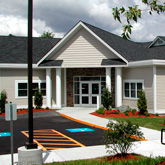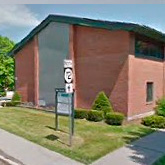Physical therapists at CVMC provide postural restoration therapy to reduce pain by repositioning the body into proper bone and muscle alignment.
Postural restoration is a posture based integrative treatment that addresses underlying biomechanics that can often lead to symptoms of pain and dysfunction. Postural restoration works to reposition the body into proper bone and muscle alignment, and then uses exercises to retrain our neuro-muscular system to engage in movements that maintain this position and prevent us from falling back into faulty positions. The maintenance and strengthening of proper postural alignment results in restoration of full function.
Understanding Postural Restoration
Postural restoration is a treatment philosophy based on decades old principles formalized in the 1990s when Ron Hruska founded the Postural Restoration Institute in Lincoln, Nebraska. Postural Restoration is based on the philosophy that the human body is not a symmetrical structure, but rather has naturally occurring asymmetries throughout the body, such as the liver being located predominantly on the right side of the body and the heart on the left.
Postural restoration states that these discrepancies are normal and that the “human body is balanced through the integration of system imbalances.” However, when one side becomes overly dominant this can cause these coordinated imbalances to become uncoordinated. Postural restoration therapists work to correct these imbalances and return the human body to its desired state.
Polyarticular Chains
Postural restoration focuses on the body’s polyarticular (multi-joint) chains of muscles that have wide-ranging effects on joint position and function.
- The Brachial Chain consists of muscle that run through the neck and front of the chest and influence neck rotation, shoulder mobility, and respiration.
- The Anterior Interior Chain consists of muscles ranging from the bottom ribs down to the knee cap, tibia, and fibula (your shin bones). This chain influences respiration, and the rotation and movement of the trunk, ribcage, spine, and lower extremities.
- The Posterior Exterior Chain (PEC) and Temporomandicular Cervical Chain (TMCC) have wide ranging effects on joint positioning and body function ranging from head to toe.
Click here to learn more about these chains and their functions.
Postural Treatment
Postural restoration therapists engage in a complete examination of each patient, just like any therapist would do. Part of this evaluation includes an examination of the diaphragm, intercostal, and other respiratory muscles important not only in respiration, but in trunk, upper extremity, and lower extremity movement and function.
The goal of therapy is three-fold: reposition, retrain, and restore.
- Reposition: Postural restoration uses exercise and the resulting pull of our own muscles to reposition the body into proper bone and muscle alignment.
- Retrain: Once this new position is achieved, therapists utilize many types of exercises (including balloons, a common technique people associate with postural restoration) to retrain your neuro-muscular system to appropriately engage in movements that will maintain this position and prevent you from falling back into faulty positions that cause pain and reduce function.
- Restore: Finally, the maintenance of and strengthening in the proper postural alignment results in restoration of full function.
Sources:
“Postural Restoration Institute.” What Is Posture?, Postural Restoration Institute , 2017
“Myokinematic Restoration - Home Study - An Intgrated Approach to Treatment of Patterned Lumbo-Pelvic-Femoral Pathomechanics .” Postural Restoration Institute . 2017, Lincoln, N

CVMC Rehabilitation Therapy - Barre
Phone
Fax
802-225-5770
Hours
Monday:
CVMC Rehabilitation Therapy - Montpelier
Phone
Fax
802-229-0231

